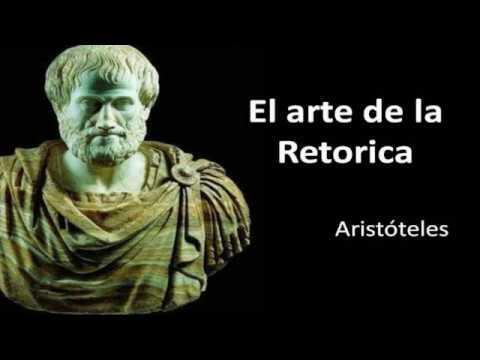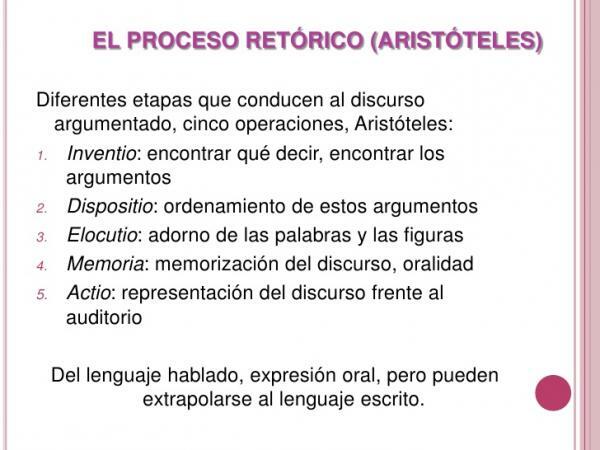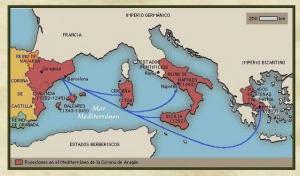Aristotle's RHETORIC

Image: Youtube
In this lesson from a TEACHER we offer you a brief summary of Aristotle's Rhetoric, a treatise on the art of persuasion and of enormous importance in the history of philosophy, which the Stagirite wrote during his two stays in Athens: the first, from 367 to 347 BC. C. (Aristotle's stage at the Academy), and the second from 335 to 322 BC. C. (Aristotle runs the Lyceum).
The study of rhetoric was not without controversy, since there was a confrontation between the Sophists, on the one hand, and Socrates, Plato, and Aristotle, for the other. The former used it to manipulate and control people's emotions. The latter defended a rhetoric based on philosophy. But it was Aristotle who related rhetoric to logic and dialectics. If you want to know more about Aristotle's Rhetoric, continue reading this lesson from a PROFESSOR.
The definition of rhetoric of Aristotle, can be read in the second chapter of the work:
“Rhetoric is the faculty to consider in each case what serves to persuade, this object does not share it with any other "art", since each one of the other disciplines covers only teaching and persuasion about a specific object, such as medicine that deals with health and disease, and geometry on the properties of magnitudes, and arithmetic on number, and, similarly, the other arts and Sciences; Rhetoric deals, on the contrary, with whatever given, as it were, it seems that it is capable of consider persuasive media in general, that is why we say that you do not limit your study to any genre specific”.
For Aristotle, unlike the sophists, and especially of Gorgias or Isocrates, who used rhetoric to manipulate and control people's emotions, rhetoric is closely linked to logic and dialectics. At the beginning of the play you can read "Rhetoric is the counterpoint (antistrophe) of dialectic."
The one from Estagira, logic tries to get to scientific certainties.Lto dialectics and rhetoricinstead, they offer a knowledge probabyou, which makes these disciplines the best for the study of issues that affect human beings. Dialectics is a very useful tool for discussing philosophical issues. Rhetoric, on the other hand, is very useful in solving practical matters. Aristotle, unites dialectics and rhetoric to create a persuasion system, away from sophist manipulation or omission and supported by knowledge.
Rhetoric, says Aristotle, it is an art or “techne”, which is always directed to production, to creation. In the Nicomachean Ethics, he explains the relationship between technique and production as follows:
“Technique always refers to production. To elaborate a technique is to speculatively search for the means of producing one of the things that may indifferently be or not be, and whose origin is in the creative agent, not in the created object. Indeed, there is no technique in or for things that exist or are necessarily produced, nor for those that occur naturally ".
Aristotle's Rhetoric consists of three books:
Book first
Explain the object of rhetoric and offers a definition of the term, as well as of the different types of rhetoric. In addition, it deals with different topics such as happiness as the purpose of the human being, pleasure, good or behavior. Finally, he summarizes the strong and weak arguments.
Second book
Offers an exhibition of the three forms of persuasion: based on credibility (ethos), in emotions and in psychology (pathos), and in reasoning (logos). Here we tell you what is ethos, pathos and logos.
Third book
Explain what the style elements, namely, lexical selection, metaphor and sentence structure, as well as the organization. References to Poetics. Chapters I - XII: deals with style (lexis). Chapters XIII - XIX: deals with the arrangement of words (Taxis).

Three elements intervene in the composition of the discourse: the inventio, the dispositio and the elocutio. In oratory, memory and act.
The inventio try to define the content of the speech, find the arguments. It is a kind of outline of what the speech will be. Divide the problem into different parts.
The rhetorical topic (inherited ideas in order to use them in discourse) includes the following elements: person, thing, place, instrument, cause, mode, time, comparison and argumentation.

Image: Slideshare
Within this summary of Aristotle's rhetoric we have to speak of the second phase of the discourse. The device consists in organize the different elements of composition into a structured whole. Organize and compose the different parts of the speech.
The structure of the discourse is as follows:
- The exordium. It aims to enjoy the approval of the public.
- Proposition. It is a short and concise statement of the matter at hand.
- The division. It consists of listing the different parts of the speech.
- The narration. It is the longest part and consists of an exposition in order to demonstrate a conclusion. When there are divisions in the topics, then an order must be followed (partitio or divisio) and determine the elements to be developed.
- The argumentation The evidence confirming the thesis is provided (confirmatio or probatio) and the contrary thesis is refuted (refutatio or reprehensio).
Different types of arguments
Aristotle distinguishes three types of arguments:
- Argument based on credibility of transmitter (moral condition or auctoritas): ethos. Values.
- Argument based on emotions of receiver: pathos. Feelings.
- Argument based on logic:logos. Arguments.
The elocutio has to do with the form of oral expression and consists of verbally presenting all the elements organized in the inventio. In other words, the style of speech. Here the qualities and registers of the issuer come into play.
The qualities they are three:
- The puritas: express verbally in a correct way.
- The perspicuitas: make a clear and understandable speech, as opposed to obscuritas.
- The ornatus: make the speech attractive, make it beautiful through the correct choice of words and their composition.
As for the records of elocution, you can talk about:
- ANDl genus humile or plain style. Its purpose is pedagogical. It uses the puritas and the perspicuitas, but does not stand out for its ornatus.
- The genus medium or medium style. It seeks to please the public so it takes more care of the ornatus.
- The genus sublime o elevated style. Pursue an emotional response from the listener, thus developing the three qualities of elocution.

Image: Slideshare

![Summary of the KOSOVO war: causes and consequences [with MAP and VIDEO!]](/f/2b0211803c70b7ecaeab2464deb1767b.jpg?width=300&height=200)

